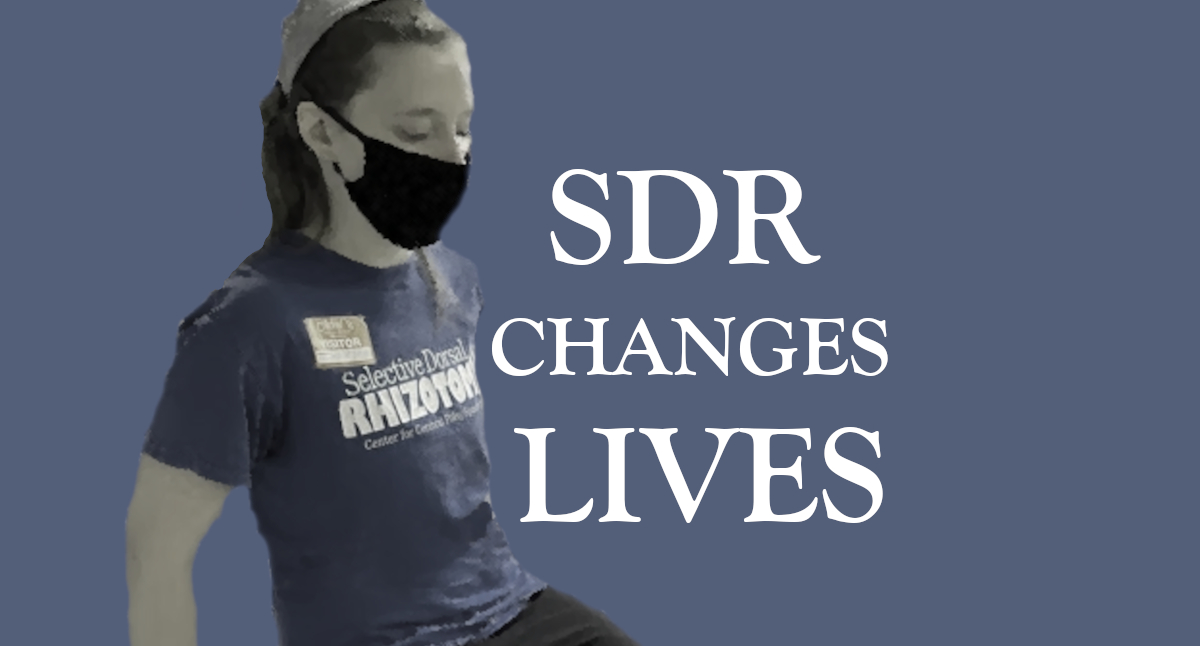fundraising
Do I need to fundraise for SDR?
That depends. If you are international and are pursuing SDR at St. Louis, then the answer is usually yes.
Some families dip into their savings to cover the surgery. In very rare cases, international families have petitioned to their country’s government and managed to get St. Louis SDR covered; however, this is not common.
If you are in the United States and pursuing SDR within the United States, insurance often covers the surgery, but how much it will cover depends on your plan, where you live, and where you are you’re pursuing SDR. (See the insurance page under the Planning tab for more information.)
How much money do I need to fundraise?
The fundraising amount varies depending on factors such as your country’s exchange rate, hotel/flight costs, whether you need PERCS in addition to SDR, and whether you’re also fundraising for post-op rehab costs. You may also need to consider miscellaneous costs such as food, gas, and/or Uber/car rental costs.
Generally, international patients who must fundraise to cover the complete costs end up aiming for anywhere between $75,000 (in US dollars) to $100,000; these figures also cover some post-surgery rehab.
For families in the United States who need to fundraise, amounts vary greatly depending on if they have some insurance coverage, the surgeon they have selected, and whether they have insurance coverage for post-surgery rehab.
The current pricing structure for St. Louis Children’s Hospital can be found in the files list on the St. Louis SDR Facebook page.
Which fundraising platform should I use?
Many families use GoFundMe because it’s such a well-known platform, so contributors feel comfortable that their money is secure. However, for fundraisers started in the United States, this platform takes 2.9 percent of each donation, plus 30 cents, as a transaction fee. Fees vary depending on the country where the fundraiser originates; you can go to their pricing page for more information.
UK families often choose Just4Children, which covers those transaction fees.
Others choose to do a Facebook fundraiser, which takes 2.6 percent plus 30 cents of each donation for transaction fees in the US. (See pricing page for more information and fees by country.).
These fundraising platforms are not available for use in every country. Sometimes, people in those countries get a charity or other trusted individual from a different country to make a fundraiser on their behalf. I’m not sure about the legality of this in each country, so please look into your options and pursue this at your own risk.
Should I start fundraising before I get an SDR acceptance?
Many people do, especially if it seems pretty likely that they’ll get an SDR acceptance. International families may start early because the surgery typically involves a waitlist period of about a year after acceptance, although cancellation dates can come earlier.
If you do decide to fundraise early, be sure to clearly state that you haven’t yet been accepted but that you’re in the process of applying. Also decide what you will do with the money if you end up getting denied, and explicitly share this information in your fundraiser before you start raising money. In the event of a denial, you may opt to refund all money, use the funds toward therapies/equipment or a different surgery, or donate to others waiting for SDR surgery.
Others decide to wait until they have gotten an acceptance. That way, they avoid having to completely change course if they end up being told they aren’t a candidate.
How can I fundraise?
I didn’t fundraise my SDR, so these are just ideas I’ve gotten from others; hopefully this page will become more detailed in time!
- Create a video that tells your story. It may also helpful to accompany this with a short description of your situation, why SDR may help, etc. Feel free to link to this website if it helps you explain the benefits and research behind SDR.
- Create a Facebook page for your SDR journey. For best results (if you and your family feel comfortable doing this, and if the patient consents), consider making the page public so that others can share it to publicize your fundraiser. However, others have had good luck with closed/private Facebook groups as well. This doubles as a great way to share your story and allow others to follow along and offer support.
- Look for charities and grants in your area that may be able to contribute. Caudwell Children is one example of a charity that can help with SDR fundraising. For families who are eligible (UK families with a household income less than £45,000), they can donate up to £2,500 (UK). Contact [email protected] for more information or to apply. Other SDR charities exist as well; many are based on your geographic location, so try checking with your local SDR group (see Community Links) for more information. UK Families also have a Facebook group specifically dedicated to SDR fundraising, SDR Fundraisers (UK).
- Organize parties, events, raffles, bake sales, etc. Local businesses can sometimes help you set these up too. An event with paid tickets can be a great way to publicize your fundraising efforts, raise money, and gather support for the journey ahead!
- Approach local businesses and ask if you can set out a collection jar. Just be sure that they empty the jar periodically, or go often to collect the funds; I’ve heard of people who steal money from these jars. Some businesses also host events where they contribute a certain percentage of their sales to fundraisers on a specific, pre-planned day.
- Contact local TV news stations, newspapers, and radio stations. This is how many people get fundraising support, especially if they’re willing to do an interview. (Do keep in mind that the trade-off for this is that you’ll be trading away some of your privacy though. Try to establish your boundaries in advance and determine how much of your journey you feel comfortable sharing with the public.)
- Make and sell custom SDR t-shirts, bracelets, or other items. Many people use Bonfire for t-shirt fundraisers.

